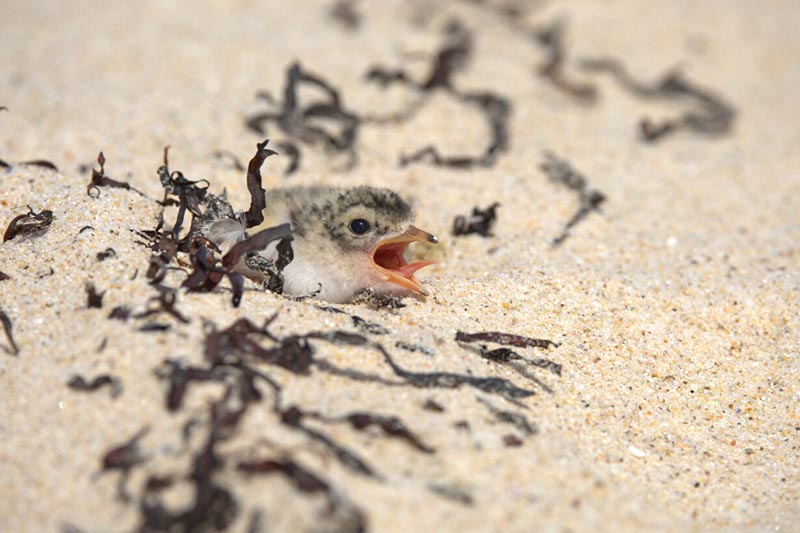

Little Tern colony turns heads
Around 36 percent of all Little Tern fledglings hatched in NSW have come from a colony in Karagi Point at The Entrance, making it the most successful Little Tern breeding colony in the state this year.

Little Tern chick (Photograph - Andrew Robinson, Technical Officer, Central Coast Council).
10 July 2024
FROM Wilsons Head in the north to Wallagoot Lake in the south, just under 430 breeding pairs of Little Terns produced around 370 fledglings in the 2023-24 breeding season.
The site in Karagi alone was responsible for around 180 breeding pairs which resulted in over 130 fledglings.
Member for The Entrance, David Mehan said “For over 20 years Little Terns have experienced a serious decline in NSW, so it’s great to see their numbers beginning to recover.”
“Karagi Point sits on the entrance to Tuggerah Lake and is an important factor in controlling flood risk around the Lake. We did experience flood during the current year and I am pleased Council have been able to manage this risk along with its obligation to protect endangered species.
“These fantastic numbers at Karagi Point would not be possible without the unwavering dedication of Central Coast Council, supported by the NSW Government’s Saving our Species program, National Parks and Wildlife Service and Biodiversity, Conservation & Science Division, and most importantly, by local beach users.”
Beach-nesting birds like the Little Tern lay eggs directly on the sand, and eggs and chicks are so well-camouflaged as to be almost invisible.
They are vulnerable to a wide range of threats, including native and introduced predators, crushing and disturbance from vehicles, humans and domestic dogs, flooding of nesting sites and adverse weather conditions.
It is vital that beach goers understand the impact they can have on the breeding season of these endangered creatures, which commences at the start of spring every year and how easy it is to help.
When attending beaches during breeding season, people should:
- Make sure dogs are walked on an approved dog-beach and always kept on a leash
- Walk close to the water line to reduce your chances of stepping on an egg or chick.
- Keep an eye out for bird nesting signs and fenced-off nesting areas on the beach
- Only drive on designated 4WD beaches, with the relevant permit, and obey all beach-driving rules including staying out of nesting areas.
Central Coast Council Acting Director Environment and Planning Luke Sulkowski said “Being able to significantly contribute to the long-term survival of an endangered species is something Council celebrates, and would like to thank the community for the crucial role that they play every season.
“As the nest colony is now considered one of the most important in NSW, Council is already planning for how we can maintain this success next season and beyond.”
For more information on beach-nesting birds in NSW, visit Share the Shore.







.jpg?crc=4257584689)










_web.jpg?crc=282450513)



